Kia Cee'd: Engine Control System / ISG (Idle Stop & Go) Description and operation
Kia Cee'd JD Service Manual / Fuel System / Engine Control System / ISG (Idle Stop & Go) Description and operation
| Description |
Idle Stop & Go (ISG) system switches off the ignition when vehicle is stopped,
and then restarts the ignition and starts the vehicle when accelerator is pushed.
It temporarily stops the engine while waiting for signal or idling to improve
fuel efficiency and reduce exhaust gas emission. However, ISG system may not
operate if engine oil or ambient temperature is too low, or if 12V battery voltage
is too low. The system can be deactivated by pushing the ISG OFF switch when
the driver wishes not to use ISG system.
Sample scenario: switching off the engine at a standstill at a red traffic light
or in stop-and-go traffic.
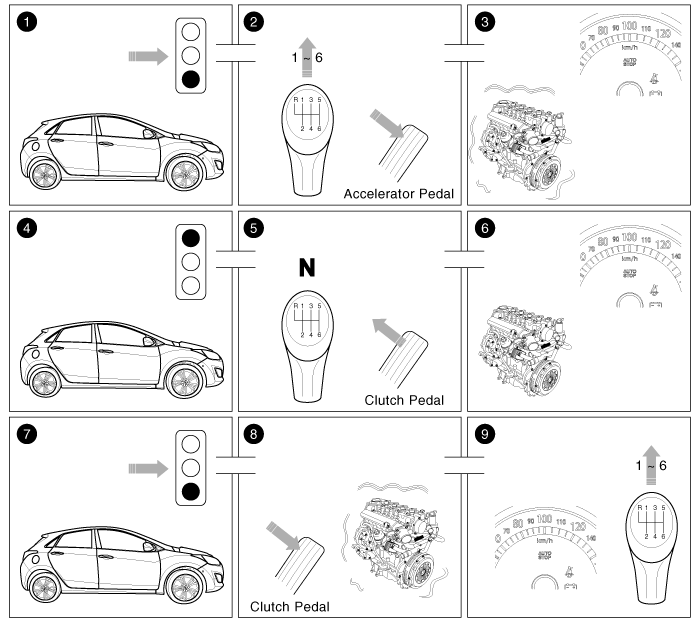
| 1. |
Vehicle moving.
|
| 2. |
Gear is engaged. The accelerator pedal is pressed.
|
| 3. |
The engine is running.
|
| 4. |
The driver brakes until the vehicle comes to a standstill.
|
| 5. |
The driver engages neutral and releases the clutch pedal.
|
| 6. |
The engine stops. The symbol "AUTO STOP" lights up in the instrument
cluster.
|
| 7. |
The driver wants to continue the journey.
|
| 8. |
The driver presses the clutch pedal. The engine starts.
|
| 9. |
The gear can be engaged and the journey continued. The symbol "AUTO
STOP" goes out.
|
Battery Sensor
The battery sensor perceives battery status. Battery status is a major influencing
factor on the ISG function. The aim is to enable a reliable start of the combustion
engine after a defined parking period from the perspective of the vehicle energy
system.
The Battery sensor monitors the following data:
| – |
Battery charge condition
|
| – |
Battery temperature
|
| – |
Voltage dip on engine start
|
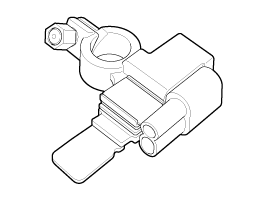
Brake Booster Vacuum Pressure Sensor
In order to ensure adequate brake power assistance in every situation, the brake
booster is equipped with a partial vacuum sensor. The brake booster vacuum pressure
sensor is located beside the brake booster.
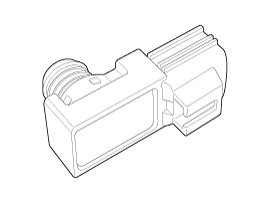
With a brake partial vacuum that is too low, the ISG fuction also starts
without activity on the part of the driver.Insufficient brake partial
vacuum can lead to safety risks during braking manoeuvres, when rolling
on an incline. To prevent this, the engine is started.
|
AGM battery
In all cases, the ISG function comes with the intelligent alternator control.
The much more frequent charge and discharge cycles mean that the load on the
battery is very high. The cycle resistance of AGM batteries means that they
achieve similar results with regard to service life despite the high load.
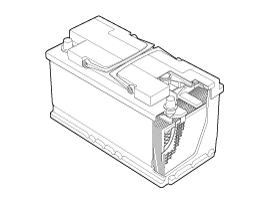
Ensure an AGM battery is fitted.
In all cases, an AGM battery must be installed and registered in the
vehicle for the ISG function to work perfectly.
|
DC/DC converter
Due to the considerably more frequent occurrence of starting operations, the
electrical load that occurs often leads to voltage dips in the vehicle network.
In order to stabilize the power supply for certain voltage-sensitive electrical
components, a DC/DC converter is used in conjunction with the ISG function.
The DC DC converter supplies the relay with a voltage that also remains constant
during the starting operation.
The DC/DC converter is fitted at the behind of the glove box.
Via the test leads for input voltage and the start relay , the electronics decide
whether the power is supplied to the output via the bypass or the DC/DC converter.
In the bypass mode, the on-board supply voltage is not fed across the DC/DC
converter, rather is transferred directly to the outputs. In the booster phase,
the vehicle voltage is adapted.
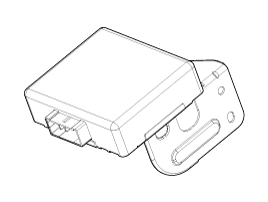
ISG OFF Switch
The ISG OFF switch on the crashpad lower panel can be used to deactivate the
ISG function.
Alternator
The battery discharge during the engine shutdown by the ISG function means that
a more powerful alternator is installed.
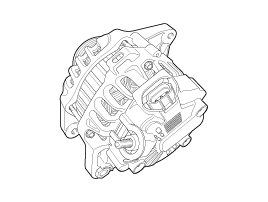
Starter motor
In conjunction with the ISG function, the starter motor must do a great deal
more work. The starter motor is therefore configured for a significantly higher
number of start cycles. The components of the starter motor have been adapted
to the higher requirements.
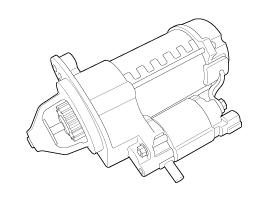
Neutral Switch
The neutral switch is mounted on top of the transmission case.
The neutral switch detects the idle position of the gearstick.
Clutch Switch
The present clutch switch is used as an input variable for the ISG function
to detect clutch operation.
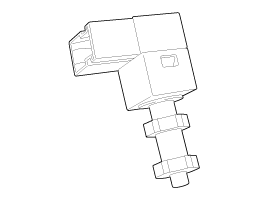
Seat Belt/door Switch (Driver)
Via the seat belt/Door switch, the ISG function can detect that the driver has
fastened the seat belt/door. If the driver has not fastened the seat belt/door,
the ISG function reacts as follows. If the seat belt or door is opened, the
engine must not be started or stopped by the ISG function for safety reasons.
Hood switch
The hood switch is included as the influencing factors in the calculation of
the ISG function. If the hood is open, the engine must not be started or stopped
by the ISG function for safety reasons.
The ISG system is strongly networked with the power management. In the
event of battery replacement, disconnection of the battery terminal
or after changing the engine management system, the reference data regarding
the battery charge state and battery condition can be lost.
They are only available again a closed-circuit current measurement of
approximate 4 hours in which the vehicle may not be wakened. In this
time, the ISG system is inactive.
|
| Operation Condition for the ISG function |
After every engine start, the function is automatically active and on stand-by.
The ISG OFF switch can be used to deactivate the function manually until the
next terminal change. Pressing the switch is confirmed by an lamp lighting up.
| 1. Idle Stop (Idle → Stop) Condition |
▶ Common Condition : Neutral Status & Clutch Pedal Released
|
Conditions Required |
||
|
The engine coolant temperature is not too low (Over 45 degree). |
||
|
Not DPF regeneration |
||
Not inhibitor condition for operating strategy or engine fault
|
||
|
Battery charge status is adequately high. |
||
|
Not communication line error - LIN, CAN |
||
|
Vehicle speed less than 5kph |
||
|
Vehicle speed over 10kph at least once after key starting or idle starting
|
||
|
ISG OFF switch off |
||
|
Driver’s seat belt and Driver’s Door and hood are closed.
|
||
|
Battery temperature is between 2 to 55 degree. |
||
|
Brake booster pressure not to low. |
||
|
Not Blower max. |
| 2. Idle Start (Stop → Start) Condition |
▶ Common Condition : Neutral Status & Clutch Pedal Pressed
|
Conditions Required |
||
Not inhibitor condition for operating strategy or engine fault
|
||
|
Not communication line error - LIN, CAN |
||
|
Driver’s seat belt and Driver’s Door or hood are closed. |
||
|
Engine stalled, then changed gear position (engaged → neutral) and pressed
clutch pedal. |
If error occurred in the idle stop status, it is possible to start the
engine by the key only.
|
| 3. Auto-starting (Stop → Start) Condition |
The engine will start automatically without the driver's action if any of the
following occurs:
▶ Common Condition : Neutral Status & Clutch Pedal Released
|
Conditions Required |
||
Not inhibitor condition for operating strategy
|
||
|
Brake booster vacuum pressure is low. |
||
|
When the battery charge status is low. |
||
|
A certain amount of time has passed after the air conditioning is On.
|
||
|
Vehicle speed is over 5kph by rolling down a hill. |
||
|
Blower Max. |
ISG system deactivation by fault
When the ISG related sensors or system error occurs, the ISG OFF switch
lights up.
Especially when the battery sensor is replaced or reinstalled, the vehicle
must be placed in the ignition switch OFF for about 4 hours for recalibration.
The ISG function is operated about 4 hours later normally.
|
When the engine is in Idle stop mode, it's possible to restart the engine
without the driver taking any action.
Before leaving the car or doing anything in the engine room area, stop
the engine by turning the ignition key to the LOCK position or removing
it.
|
 ISG (Idle Stop & Go) Components and components location
ISG (Idle Stop & Go) Components and components location
Components Location
1 . Battery sensor
2 . Brake Booster Vacuum Pressure Sensor (BBVPS)
3 . AGM battery
4 . DC DC converter
5 . ISG OFF switch
6. ...
 ISG (Idle Stop & Go) Repair procedures
ISG (Idle Stop & Go) Repair procedures
Inspection
1.
Remove the ISG switch from the switch assembly.
2.
Check the continuity between the switch 3 and 6 terminals as the ISG
...
Other information:
Kia Cee'd JD Service Manual: Components and components location
Components
[5Door]
1. Rear bumper cover
2. Rear bumper side bracket [RH]
3. Rear bumper side bracket [LH]
4. Rear bumper under cover
Components (2)
[3Door]
1. Rear bumper cov ...
Kia Cee'd JD Service Manual: Repair procedures
Diagnosis With GDS
1.
BSD system defects can be quickly diagnosed with the GDS. GDS operates
actuator quickly to monitor, input/output value and self diagnosis.
2.
Connect the cable of GDS to the data link connector in driver si ...
© 2017-2025 www.kceed.com




